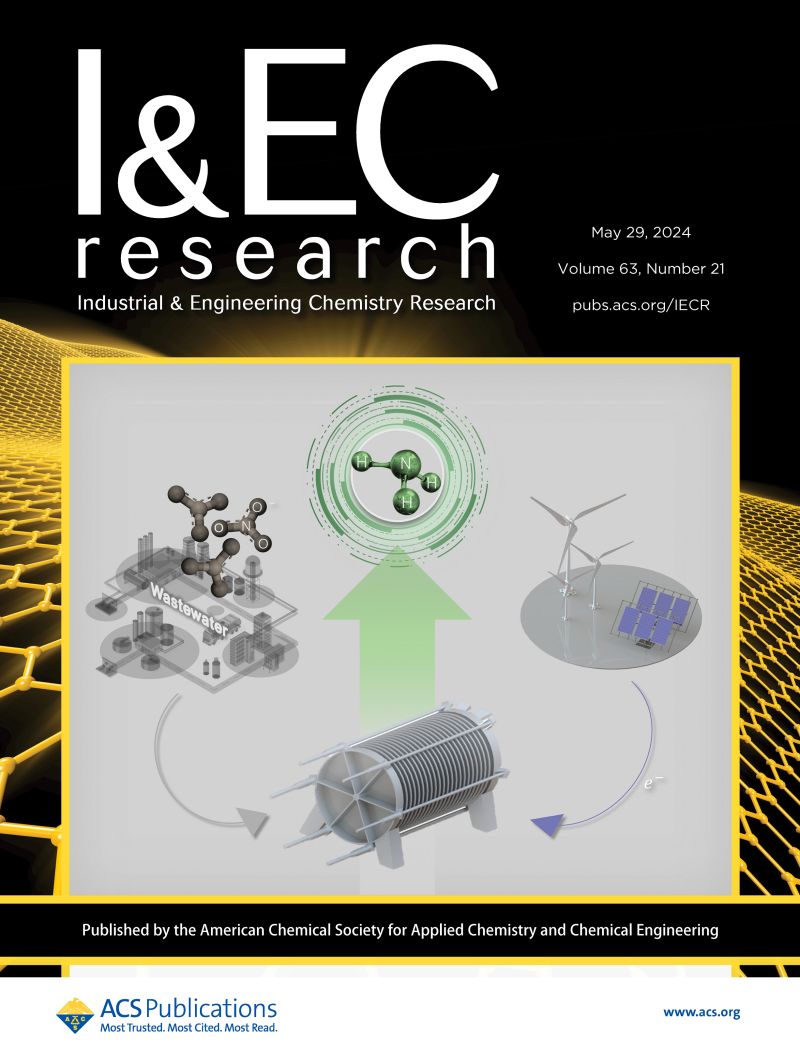Suspension Solution Electrospinning for Constructing Co3O4/CeO2 Interfaces to Boost Styrene Oxidation
IF 3.8
3区 工程技术
Q2 ENGINEERING, CHEMICAL
引用次数: 0
Abstract
Styrene, as a typical volatile organic compound (VOC), is widely present in the production of thermoplastic plastics. Constructing synergistic active sites that promote the cleavage of the benzene ring and C═C double bond is an effective approach for the catalytic combustion of styrene. However, the challenge remains how to construct efficient interfaces while preventing the phase separation of different components. Here, we employed a suspension solution electrospinning strategy to prepare catalysts with varying CeO2/Co3O4 interface content. The 1Co@Si-9Ce catalyst achieved 50% and 90% styrene conversion at 272 and 318 °C, respectively, along with excellent hydrothermal stability. X-ray absorption fine structure spectra and cyclic voltammetry curves revealed that the CeO2/Co3O4 interface altered the local electronic environment. Density functional theory calculations further confirmed that the CeO2/Co3O4 interface facilitates lattice oxygen activation, thereby accelerating the oxidation of the intermediate species benzaldehyde to maleic. This study provides an alternative strategy for preparing interface-enhanced transition-metal oxide catalysts for oxygen species activation and VOC abatement.

苯乙烯作为一种典型的挥发性有机化合物(VOC),广泛存在于热塑性塑料的生产中。构建能促进苯环和 C═C 双键裂解的协同活性位点是苯乙烯催化燃烧的有效方法。然而,如何在防止不同成分相分离的同时构建有效的界面仍然是一个挑战。在此,我们采用悬浮溶液电纺丝策略制备了不同 CeO2/Co3O4 界面含量的催化剂。1Co@Si-9Ce 催化剂在 272 ℃ 和 318 ℃ 下分别实现了 50% 和 90% 的苯乙烯转化率,并具有优异的水热稳定性。X 射线吸收精细结构光谱和循环伏安曲线显示,CeO2/Co3O4 界面改变了局部电子环境。密度泛函理论计算进一步证实,CeO2/Co3O4界面促进了晶格氧活化,从而加速了中间产物苯甲醛氧化成马来酸。这项研究为制备界面增强型过渡金属氧化物催化剂提供了另一种策略,可用于氧物种活化和挥发性有机化合物减排。
本文章由计算机程序翻译,如有差异,请以英文原文为准。
求助全文
约1分钟内获得全文
求助全文
来源期刊

Industrial & Engineering Chemistry Research
工程技术-工程:化工
CiteScore
7.40
自引率
7.10%
发文量
1467
审稿时长
2.8 months
期刊介绍:
ndustrial & Engineering Chemistry, with variations in title and format, has been published since 1909 by the American Chemical Society. Industrial & Engineering Chemistry Research is a weekly publication that reports industrial and academic research in the broad fields of applied chemistry and chemical engineering with special focus on fundamentals, processes, and products.
 求助内容:
求助内容: 应助结果提醒方式:
应助结果提醒方式:


